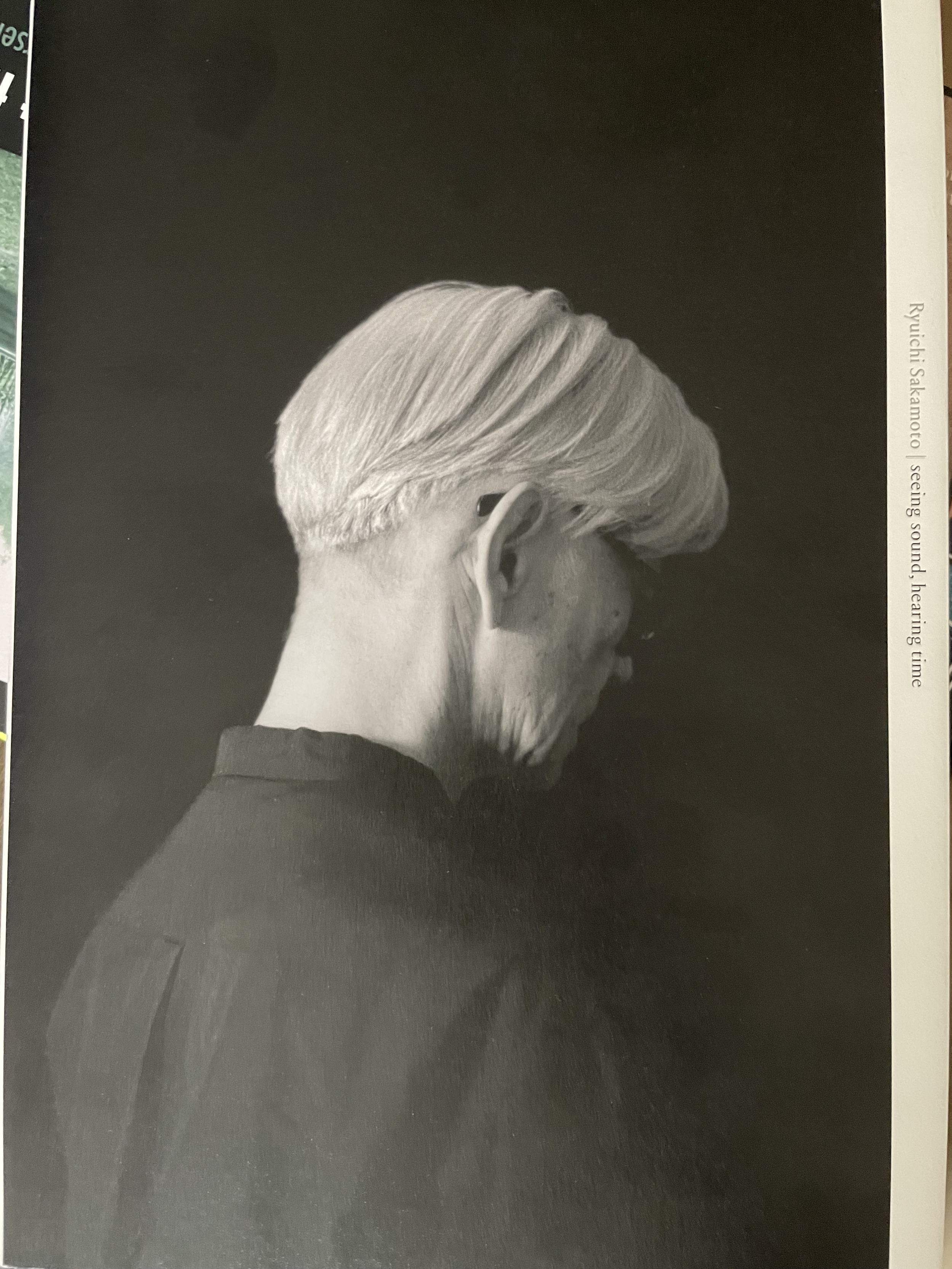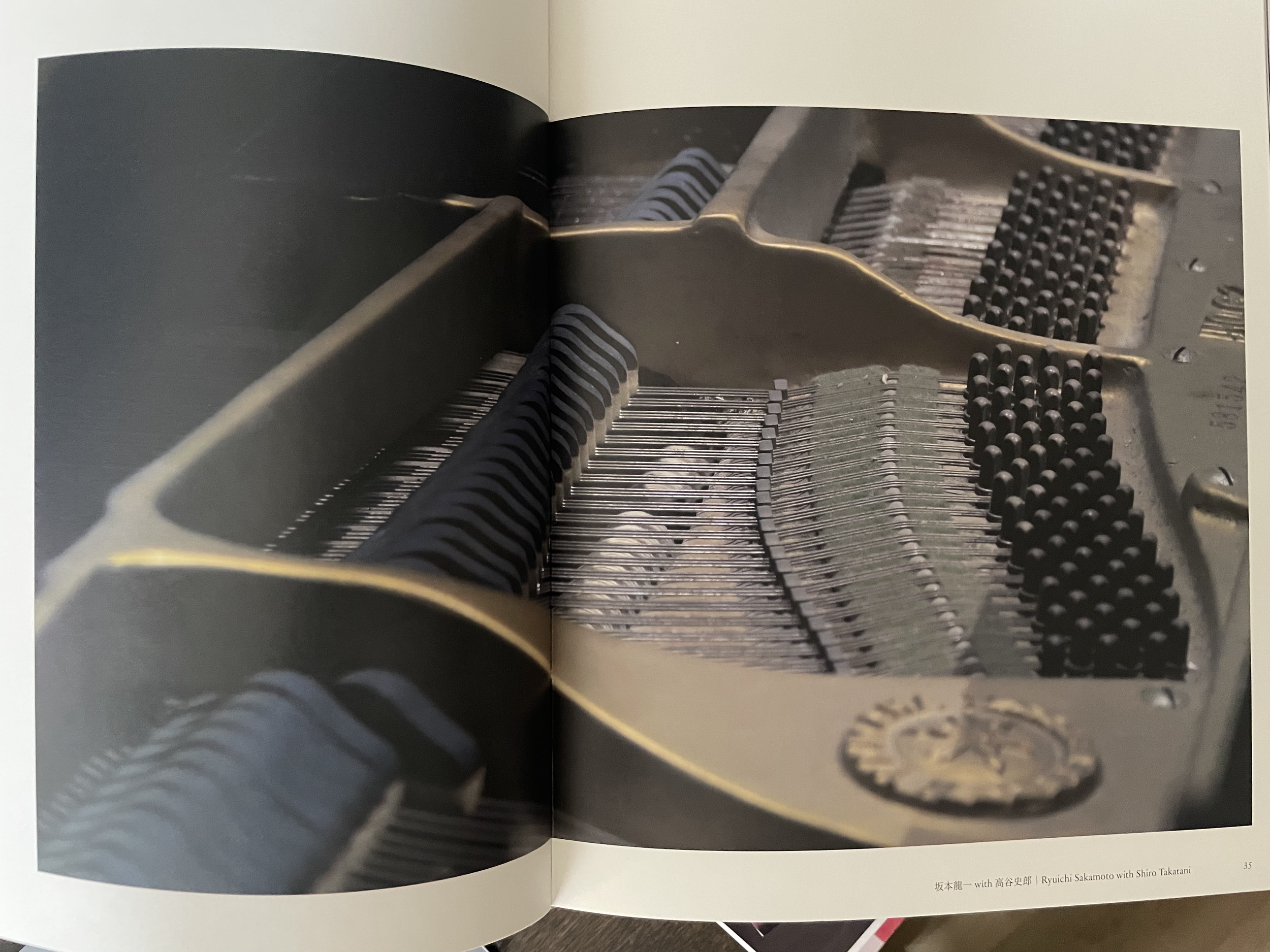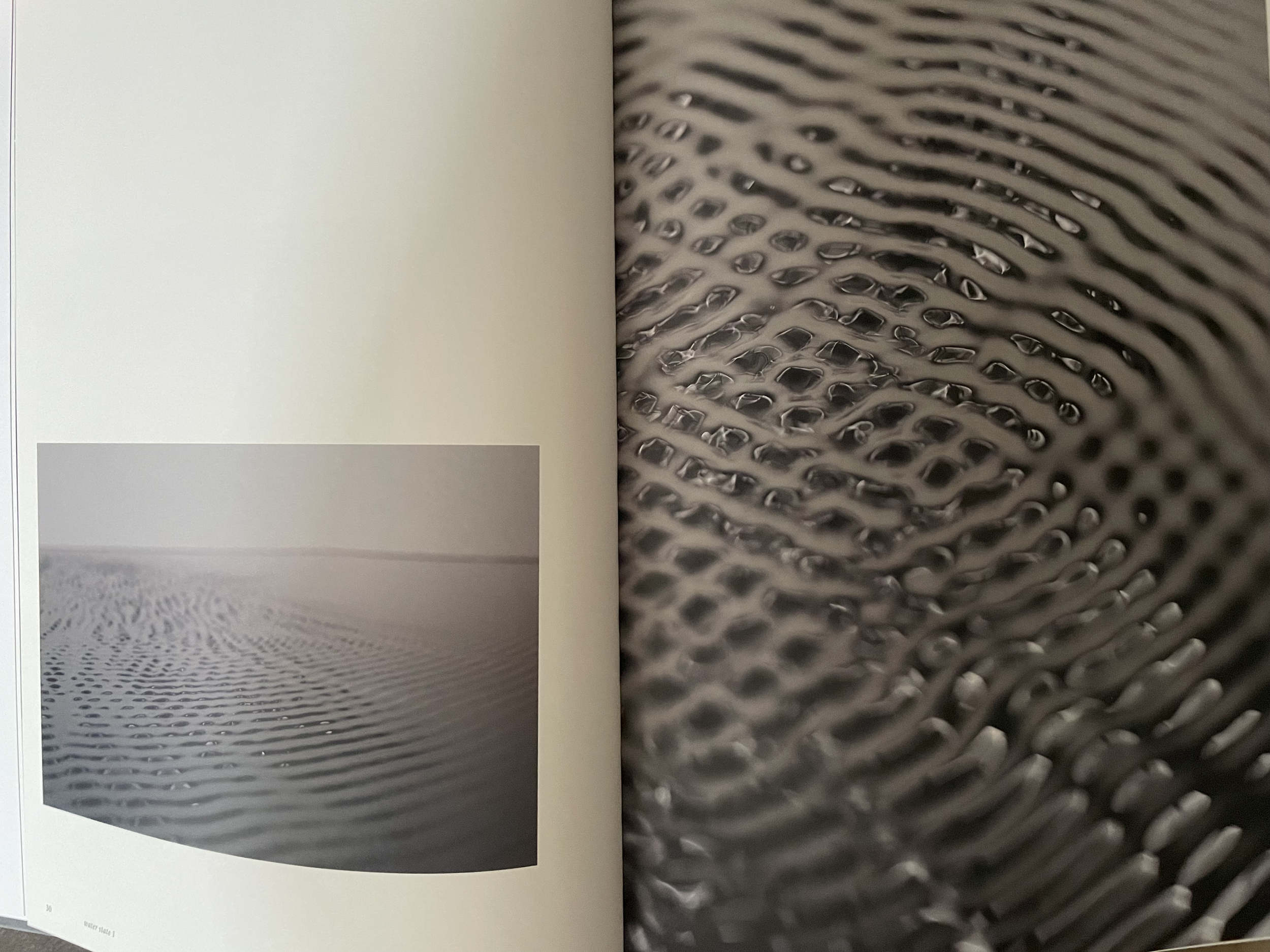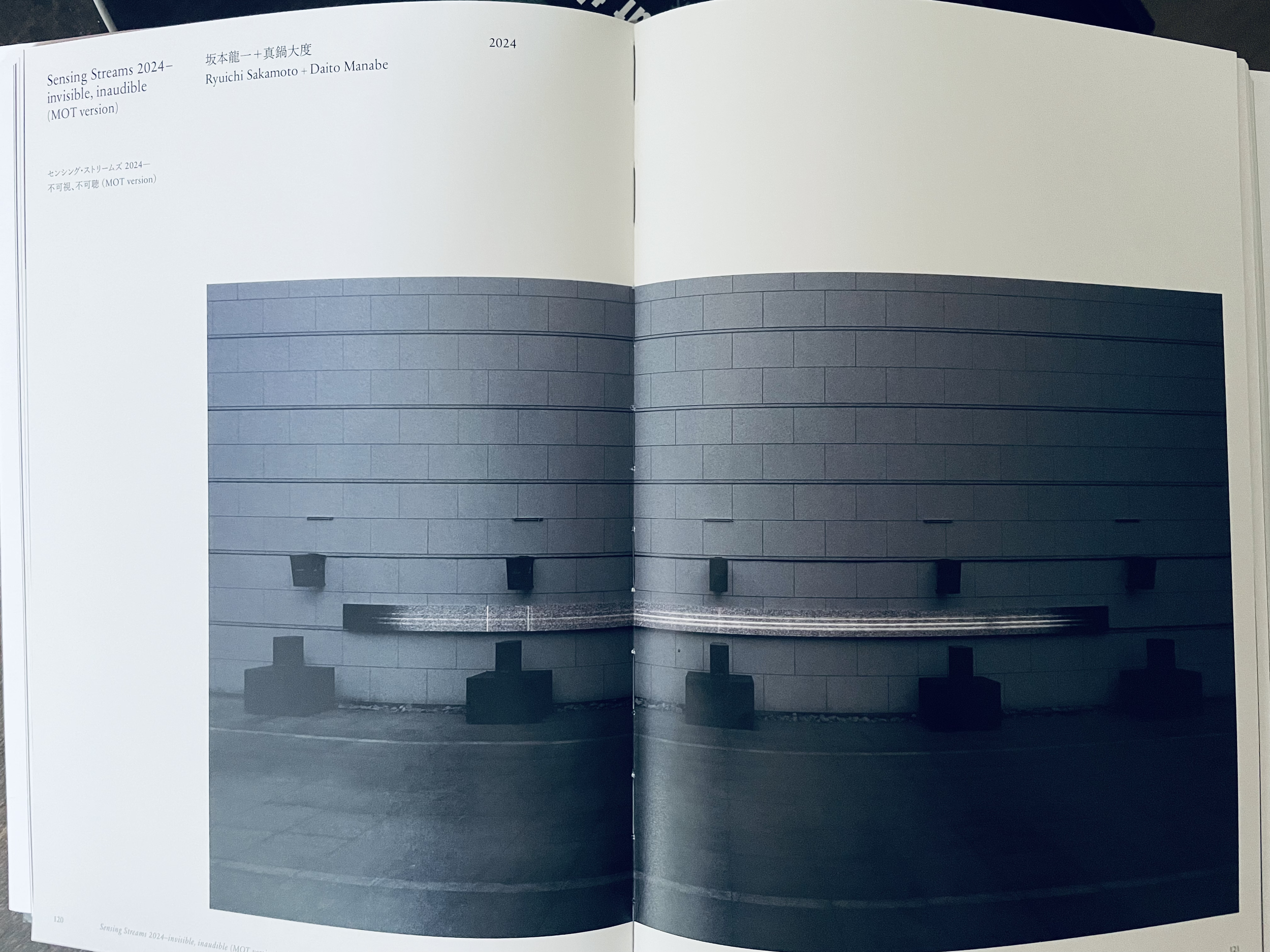seeing sound
A Book about The Space Between Notes
In order to delve deeper in the enigma of composer Ryuichi Sakamoto I got this book - "Ryuichi Sakamoto: seeing sound, hearing time."
The book is tied to an exhibition that took place in Tokyo - one I'll never see because, well, Japan, it’s on the list. But somehow that makes the book more interesting. It's like having a conversation with someone about a concert you both missed.
Flipping through it, I keep stopping at these installation photos. Sakamoto wasn't just making music in his later years - he was creating spaces. Rooms where sound becomes something you walk through, not just listen to. There's this piece called "water state 1" where weather data controls falling water droplets, and the ripples make sound and light. Simple concept, but it gets at something I've been thinking about lately.
When I'm composing - whether for films or my own stuff - I'm always trying to find the space between notes. That silence that makes the sound meaningful. Sakamoto seemed to understand this on a different level. He was literally building those spaces, making them physical.
Reading about his collaboration with visual artists, I realize how different the creative process is between film scoring and independent composition. In film work, you're part of a larger artistic vision, which creates its own kind of creative challenge. Sakamoto found ways to explore both - music that serves story and music that exists purely for itself.
There's a photo of an installation where a tsunami-damaged piano plays music, when displayed for the first time in 2017, taken primarily from Sakamoto’s album async, generated by seismic data from around the world. The piano "tuned by nature," as he called it. That idea of letting the world compose itself through you - it's both humbling and liberating.
tuned by nature
water state 1
I think about my upcoming album, the one about the loss of my father. Those pieces came from a similar place - not trying to force emotion into music, but letting the music find its own way to express what words can't reach. One piece is a one take recording of notes that found me. Sakamoto seemed to spend his whole career exploring that territory between feeling and sound.
The installation “sensing streams 2024”, a 50cm-wide LED display, accompanied by outdoor speakers, stretches 16m along a wall at the Museum of Contemporary Art in Tokyo. Electromagnetic wave data used by mobile phones, Wifi, FM Radio, is collected by antennas outside the museum and transformed into image and sound.
The book makes me want to push further with my own work. Not just film scoring, though I love that, but finding ways to let music exist in space, in time, where the music can exist purely on its own terms.
Maybe that's what I'm really doing with the memorial album - creating my own installation, even if it's just in people's headphones.
"Ryuichi Sakamoto: seeing sound, hearing time" is available through various bookstores. I’ve got it from commmonsmart.com The exhibition it documents ran at the Museum of Contemporary Art Tokyo until March 2025.



